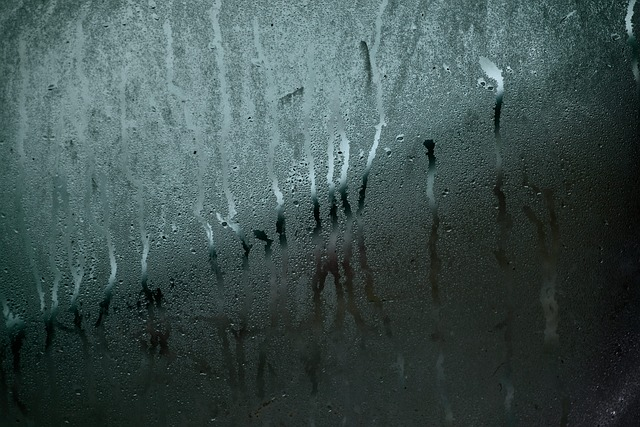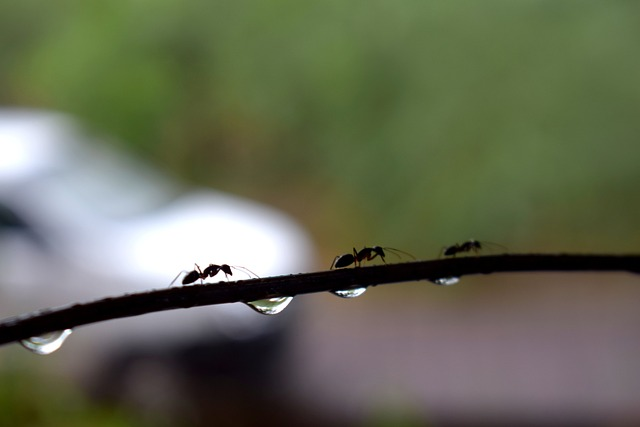Are you noticing moisture building up on the inside of your aluminum windows? While it might seem like just an annoyance, this “window sweating” or condensation can signal a bigger issue. Left unchecked, it not only looks unsightly but can also contribute to mold, mildew, and even damage to your home’s interior — posing both structural and health risks.
Condensation is especially common during the colder months. Aluminum windows, in particular, are more prone to sweating because of their high thermal conductivity. The science is simple: when warm indoor air meets the cold surface of your aluminum window, the moisture in the air condenses into water droplets.
The good news? You don’t have to live with foggy, damp windows. In this guide, we’ll explain why aluminum windows sweat and share practical, proven solutions to reduce condensation, improve indoor comfort, and protect your home for the long term.
What is window condensation or window sweating?
Windows condensation, also known as windows sweating, is a common problem that occurs when the temperature inside a home is warmer than the temperature outside. This causes the moisture in the air inside to condense and form droplets on the surface of windows. The droplets are formed when the warm indoor air comes into contact with the cold surface of the windows, which causes the moisture in the air to condense and form droplets. This phenomenon i.e. interior window condensation can occur on both single and double-paned windows, but it is more common on single-paned windows.
Similarly, exterior window condensation also occurs due to temperature differences, but this time it involves the temperature outside of the home being warmer than the air inside. This causes the excess moisture in the air outside to condense on the outside of the window glass, leading to wet spots and droplets forming. Exterior condensation on windows is also known as fogging, and usually occurs on storm windows.
The musty smell that often accompanies windows condensation is usually unpleasant and makes the home feel damp and uncomfortable. Additionally, the droplets of water that form on windows can cause damage to window frames and sills, as well as to the window treatments, such as curtains and blinds.
The role of warm air and cold air in window condensation
The warm air holds more moisture than cold air. When warm, humid air comes into contact with a cold glass surface of the window, the moisture in the air condenses and forms water droplets on the surface. The warmer the air inside the building, and the colder the window, the more likely it is for condensation to form on the window.
What are the causes of window condensation?
There are several causes or factors that lead to window condensation. The following are some of the most important factors that contribute to the problem:
Poor insulation
Poor insulation is one of the main causes of window condensation. When the insulation in a home is inadequate, the outside cold air can easily penetrate through to the warm interior and cause condensation on the windows. This is due to a phenomenon called the dew point. The dew point is the temperature at which the air becomes saturated with water vapor and condensation occurs.
Moreover, aluminum frames of windows are a good conductor of heat, which means that they can transfer heat quickly from the inside of a building to the outside or vice versa. When warm air inside the room comes into contact with the cold aluminum frames of the windows, the warm, moist air reaches its dew point, resulting in condensation on the aluminum frames.
High Humidity Levels
The second most important factor that leads to window condensation is high humidity levels in homes.
When the air inside a home is more humid, it holds more moisture. And when this air comes into contact with a surface that is cooler than the air, such as a window, the moisture in the air will condense on that surface. This is because as the air cools, its ability to hold moisture decreases, causing the excess moisture to turn into water droplets on the window. Two of the main causes of excess humidity inside are showering and cooking. Showering and cooking release excessive moisture inside. Therefore, run bathroom and kitchen fans while showering and cooking to reduce interior condensation on your windows.
Poor ventilation
Poor ventilation is another factor that causes windows to sweat. Poor ventilation occurs when there is not enough air circulation in a home and the air becomes stale and humid. This can result in condensation on windows because the warm, moist air inside has nowhere to go and comes into contact with cold window glass.
Inadequate ventilation can also cause moisture levels to build up in other areas of the home, such as the attic, which can further contribute to the problem.
Single-pane windows
Single-pane windows are more prone to condensation because they lack the insulation of double-paned windows. Single-paned windows also tend to be colder than double-paned windows and are more susceptible to temperature changes, which can also contribute to condensation. The surface of window panes gets cold when coming in contact with cold air. The cold glass then draws the heat and moisture from the air, causing it to condense into droplets.
Window’s location
This might be an interesting factor as most of us are unaware of this factor.
You won’t believe the location of windows can also play a role in condensation. Windows that are located on the north side of a building or near trees and other vegetation are more likely to experience condensation because they are exposed to cooler air. On the other hand, windows that are exposed to direct sunlight will be warmer and less likely to experience condensation.
Additionally, windows located on higher levels of a building tend to be cooler than those on the ground floor, as heat rises.
So, these are the main causes of windows sweating. It is important to identify the cause in order to understand how to best prevent condensation from occurring.
How to keep windows from sweating?
Window condensation, often called “sweating,” happens when warm, humid indoor air meets a cold glass surface. While occasional moisture is normal, constant condensation can damage window frames, promote mold growth, and make your home feel damp. The key is to reduce indoor humidity, improve airflow, and enhance window insulation.
1. Reduce Moisture in Your Home
The first step is tackling the sources of humidity. Everyday activities such as cooking, showering, and drying clothes indoors can significantly increase indoor moisture.
-
Improve Ventilation: Open windows and doors for a short period to release moist air, especially after cooking, showering, or bathing.
-
Use Exhaust Fans: Always run kitchen and bathroom exhaust fans during and after use to vent steam and humid air outside.
-
Run a Dehumidifier: Place a dehumidifier in high-moisture spaces like basements or laundry rooms to actively remove excess moisture.
-
Limit Indoor Clothes Drying: Avoid drying laundry indoors; instead, dry clothes outside or in a well-ventilated utility room.
-
Manage Houseplants: Too many plants or frequent overwatering can contribute to humidity. Keep them balanced and avoid overcrowding.
-
Window Fans: If extractor fans aren’t available, a window-mounted fan can help move air out and prevent moisture buildup.
2. Improve Air Circulation and Warmth
Keeping the air moving reduces condensation and prevents moisture from settling on cold glass.
-
Keep Air Moving: Run ceiling fans in reverse (clockwise) during winter to push warm air down. Set your HVAC system fan to run continuously for even air distribution.
-
Maintain Consistent Temperature: A steady, slightly warmer indoor temperature helps window glass stay closer to room temperature, reducing condensation risk.
-
Move Furniture Away: Avoid blocking vents or placing furniture directly in front of windows, as this restricts airflow and increases condensation.
3. Upgrade and Seal Windows
Sometimes the issue isn’t just humidity—it’s poor insulation or gaps around the window that let cold air in.
-
Add Weatherstripping: Seal drafts around windows and doors with quality weatherstripping or caulk to stop cold air infiltration.
-
Install Storm Windows: Adding storm windows can provide an extra barrier of insulation during colder months.
-
Consider Double or Triple Glazing: Modern double-glazed or triple-glazed windows insulate better, reducing temperature differences and minimizing condensation.
-
Use Window Treatments Wisely: Heavy curtains or blinds can trap moisture near the glass. Keep them slightly open to allow airflow.
4. Long-Term Prevention Tips
For persistent condensation problems, combining multiple strategies is the most effective approach.
-
Keep indoor humidity levels between 30–50% (use a hygrometer to measure).
-
Schedule routine HVAC maintenance to ensure proper air circulation.
-
Insulate your home well (walls, ceilings, and floors) to balance indoor temperatures.
-
Consider upgrading to thermally broken aluminum windows or vinyl windows with integral blinds for better insulation.
Can exhaust fans reduce condensation on windows?
Exhaust fans can help to reduce condensation on windows by removing excess moisture from the air inside a building. Moreover, they also push warm air outside. By venting humid air to the outside, exhaust fans can lower the humidity level inside the building, which can reduce the amount of moisture that is available to condense on windows. However, similar to running ceiling fans, exhaust fans alone may not solve the problem of condensation, as it is often caused by other factors such as poor insulation, high humidity, and air leakage.
By following these steps, you can help to keep your windows from sweating and enjoy a comfortable living environment all year round. Now you know how to keep windows from sweating, let’s move on to a conclusion.
Conclusion
In conclusion, sweating windows in winter is a common problem. The main causes of windows sweating are poor insulation, high humidity levels, poor ventilation, and single-pane windows. However, there are solutions to this problem such as adding weatherstripping or caulk around the window frame to seal any gaps and installing window insulation film or insulated curtains. It’s also important to ensure that the windows themselves are in good condition, with no cracks or broken seals. However, if your windows are in really poor condition, it is better to replace them with thermal break aluminum windows. By implementing these solutions, you can enjoy a warm and cozy home without any added humidity.
Do you have any other questions about window sweating or about your potential window replacement options?
Feel free to reach out; our team will be happy to serve you.
A BONUS read: Planning to Get New Windows? Here’s Why You Should Consider UPVC








